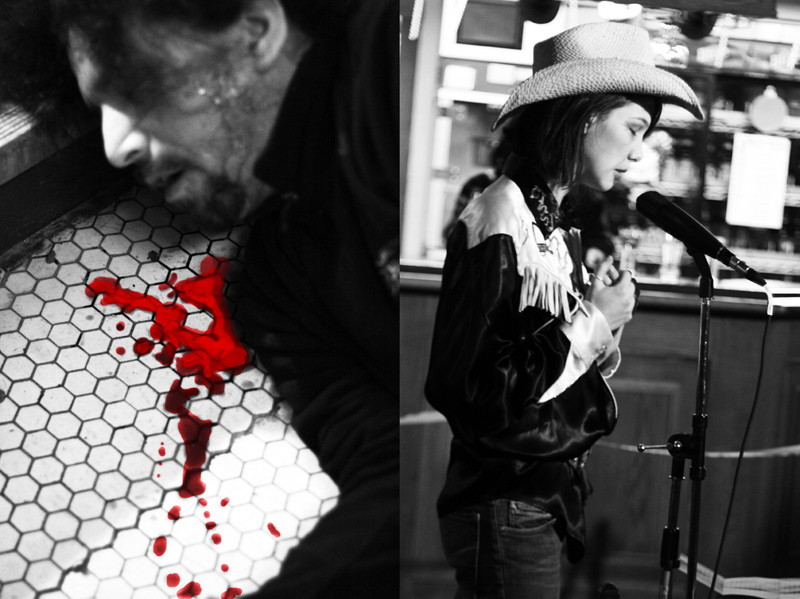Down(town) and out in Winnipeg
Multi-media exhibit by acclaimed artist Steven Loft reveals the nature of slummy Winnipeg bars
Racist songs and severe beatings – both are a part of a new art exhibit that depicts the social life of, and sets the atmosphere for, a dejected bar crowd.
Created by acclaimed media artist Steven Loft, …welcome…a history in two parts is currently on display at Urban Shaman Gallery.
The exhibit is in a small dark room, set up to look like the inside of a bar. Two screens each show a short three-minute film.
In the first clip, a girl sings the 1969 country song Your Squaw is on the Warpath on a karaoke machine. This is juxtaposed with the second clip, in which a man is severely beaten in the bar’s washroom. The clips end with the words Down(town) Time flashing on the screens.
The whole experience is like a punch in the face: Quick, clear, engulfing.
“ The whole experience is like a punch in the face: Quick, clear, engulfing.
“One of the things I’ve always loved about Winnipeg, is that it is a city that ‘wears its heart on its sleeve,’ as it were,” the 48-year-old wrote in an e-mail when asked why he decided to create this particular work.
However, the project is not about what Winnipeggers want to see about their city, but rather the things that go on behind the scenes – like abuses, illicit economies and violence.
“It can be steamy and it can be harsh…but it’s real people leading lives the only way they know.”
Loft, a Mohawk of the Six Nations, was recently named as the first aboriginal curator-in-residence at the National Gallery of Canada in Ottawa. He lived in Winnipeg for five years when he worked as the director of Urban Shaman.
During that time, he came to love Winnipeg and became fascinated by it. The exhibit is a result of that love and fascination, and is also based on the time he spent in bars like the Woodbine on Main Street. The clips were actually filmed there.
One of the most shocking parts of the exhibit is not the violence, but the racist song that the girl sings.
“As soon as I heard it, I knew I had to use it in a video piece,” Loft wrote.
There is a reason for everything he included in the exhibit. Why is the Caucasian girl who sings at the bar heavily made-up? Along with his fascination with the “phenomenon of make-up,” Loft wanted to imply that the girl was abused in some way.
This seems to be what Loft is all about: subtlety, and getting you to think about the tough questions.
So what exactly are the characteristics of the social life and atmosphere of a “dejected bar crowd,” and what does this mean about society?
“You should go to one, and then tell me what you think,” Loft wrote.
Published in Volume 63, Number 26 of The Uniter (April 2, 2009)







